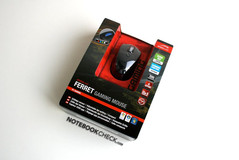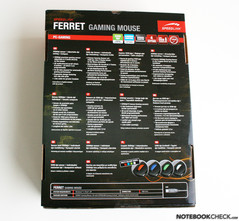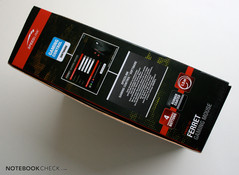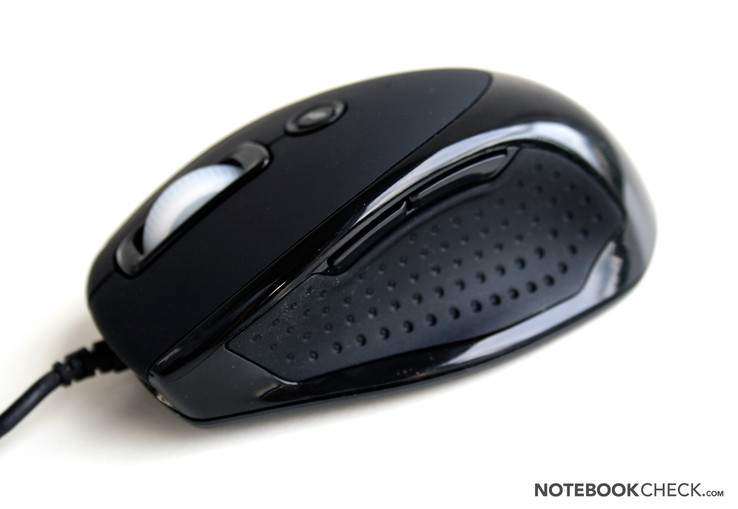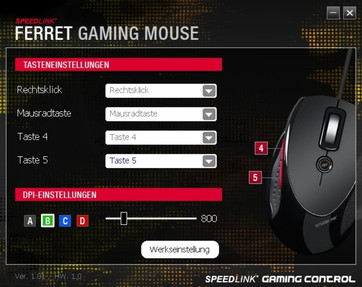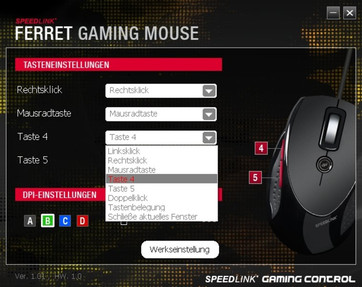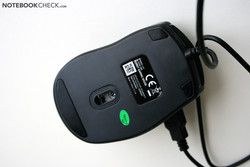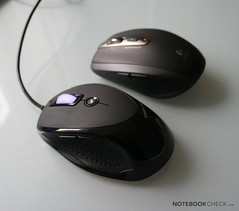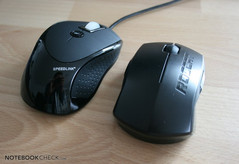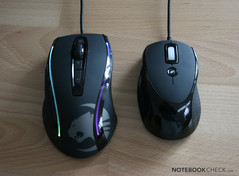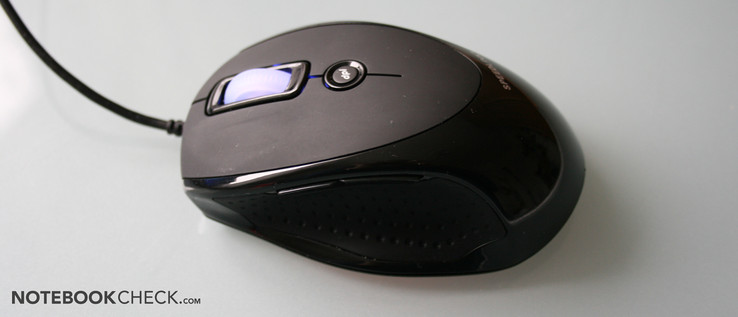Review Speedlink Ferret Gaming Mouse
Speedlink Ferret is a cabled gaming mouse that especially attracts interested parties with a low price tag. However, the Ferret is also a mobile companion due to its small size.
Technical Data
- Dimensions: 103mm x 65 mm x 40 mm (l x w x h)
- Weight: 73 g
- 6 mouse buttons + 2 way mouse wheel
- Scanning: max.3200 dpi, optical
Design and Workmanship
The small gaming mouse's curved design has been built for righties. The design is successful, but nothing particularly special. The "dpi" logo on the button with the same name makes a chintzy impression.
The choice of material doesn't show any flaws despite its low price. It also feels good. The more expensive Logitech Anywhere MX Mouse can only stand out in details (e.g. its lateral mouse buttons). In our opinion, the also more expensive Roccat Pyra even has to admit a slight defeat.
Our test device's workmanship also gives no reason for complaint. The mouse can be distorted and doesn't creak under applied pressure.
Features
The Ferret shows restraint as to features. Aside from the usual mouse functions (depressible scroll wheel, two additional thumb buttons), the gaming mouse only has a dedicated dpi button. The chosen dpi level is coupled to the mouse wheel's light. Thus, the set dpi level can easily be determined. Its mapping can be modified in the somewhat austere driver in 400 dpi steps (3200 dpi maximum).
The Ferret worked trouble-free under Linux (tested with Ubuntu 10.10) and Mac OS X (10.6.4). However, Speedlink doesn't provide a suitable driver for configurating the buttons. The settings ex-factory were nevertheless useable for both operating systems in regards to precision.
Performance
The most important function of a gaming mouse is logically its precision. Speedlink advertises an optical sensor with a resolution of 3200 dpi. The precision can convince at about 1200-1600 dpi in our application and gaming tests. Both shooters and real-time games could be controlled accurately in the test. The sensor responds up to a distance of 2-3 mm from the surface, whereby no larger cursor deviations occurred when the mouse was relocated.
The three built-in gliding surfaces provide the Ferret with good up to very good gliding traits. We could push our little mouse around particularly well on our very old Func Surface 1030.
The optical sensor worked on all surfaces perfectly, with exception of glass. Merely the Darkfield Sensor in the latest Logitech top models (e.g. Anywhere MX proves to have a superior detection capability.
Competitors
The aforementioned Anywhere MX has about the same size. However it is considerably heavier with the batteries. Additionally, design, workmanship and haptics are on a slightly higher level. The Darkfield Sensor is also very precise and even works on glass surfaces. However, its gliding qualities are a bit poorer and the Logitech mouse plays in a different league especially with its significantly higher price.
The Rocat Pyra is also in the same size region as the Ferret. In our opinion, its workmanship and material quality is a bit inferior to that of the Ferret. The laser sensor, the interruption-free transmission and sophisticated drivers are on the pro side. Its price is also much higher than that of the Speedlink.
Last but not least, the Speedlink has to match itself with a full-fledged gaming mouse, such as the Roccat Kone+. They don't fatigue larger hands as quick due to its large handrest. In return, they aren't as light and portable as small mobile mice. The Kone+'s workmanship, haptics and form play in the upper league and even the design with a light bar is impressive. The Kone+ can also unseat the Ferret with its driver features. On the other hand, the Roccat Mouse is twice as expensive, which relativizes the comparison.
Verdict
Speedlink Ferret is a small and inexpensive gaming mouse for on the go. It scores with a precise sensor and good gliding traits. Our test device's materials and workmanship don't provide reason for complaint.
The only striking drawback: Your hand fatigues considerably faster at longer use due to the small size. This isn't the case for "normal" sized mice. However, it is dependent on the user's hand size and mouse handling.
At a retail price of about 20 euro (currently 14 euro at Amazon.de), the Speedlink Ferret remains significantly below the price level of other gaming mice and can thus win our recommendation for on the move.
+ Good gliding traits
+ Gaming performance
+ Dedicated dpi button with colored feedback
+ Low price
- Few driver functions


 Deutsch
Deutsch English
English Español
Español Français
Français Italiano
Italiano Nederlands
Nederlands Polski
Polski Português
Português Русский
Русский Türkçe
Türkçe Svenska
Svenska Chinese
Chinese Magyar
Magyar
